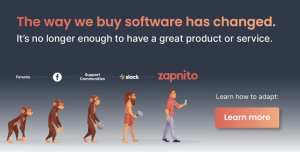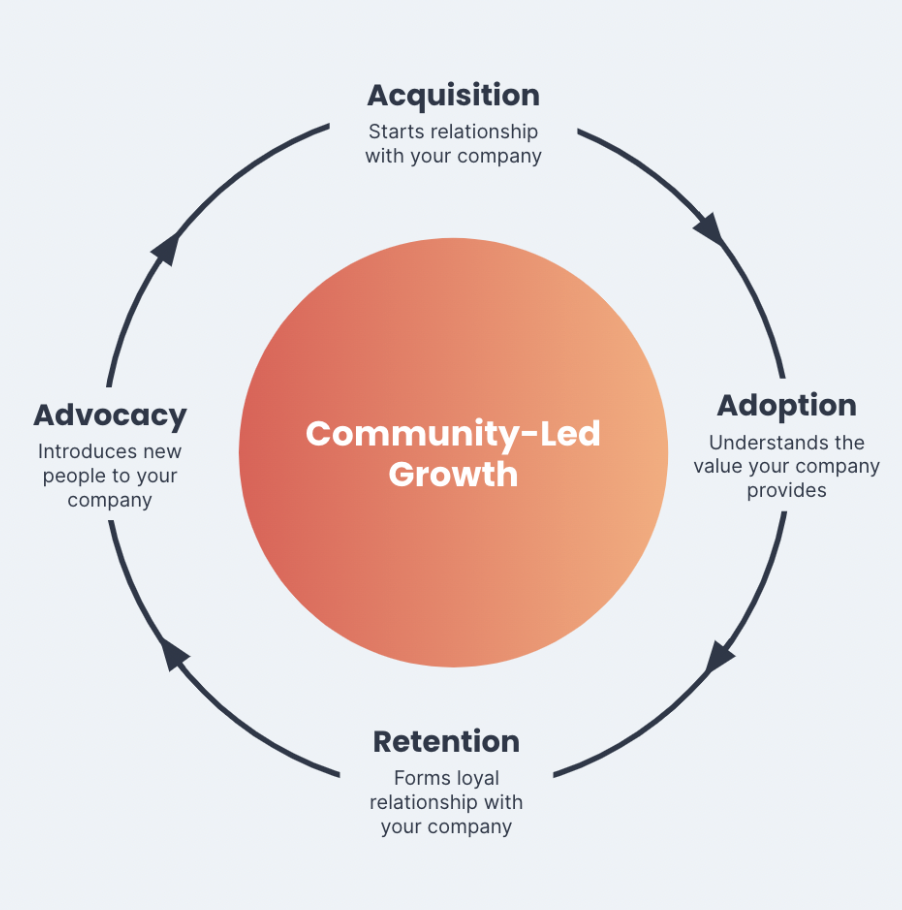Activating your community: how B2B SaaS marketers can streamline the buying process
From top-down to bottom-up For years, the traditional buying model for B2B products was top-down. Decisions were made at the senior level of companies, with the end user having little say in the process. Software companies held all the power, with the role of the customer rarely extending beyond consuming the final product. The limited ability […]

From top-down to bottom-up
For years, the traditional buying model for B2B products was top-down. Decisions were made at the senior level of companies, with the end user having little say in the process. Software companies held all the power, with the role of the customer rarely extending beyond consuming the final product. The limited ability to discuss and compare rival products meant that customers were essentially reliant on the top 3 or 4 companies in a given industry to advise them, leaving them with less choice and giving those companies less of an incentive to keep improving their products or consult their customers on how they could do better.
Since then, things have changed a great deal. The market has shifted a full 180 degrees, giving the customer power to share their experiences with the brands they use and in turn providing more information to prospective new customers. Agility and flexibility are the new sought-after traits, giving the end user the ability to have a say in the software their employers use. The customer’s role is now more active; they are engaged in a constant dialogue with both the brand itself and their fellow customers, informing those brands’ decisions.
What was once a top-down market is now bottom-up, with purchasing decisions often being made without sales involvement. With 87% of buyers now wanting to self-serve part or all of their B2B buying journey, offering audiences the ability to complete the buying stage asynchronously is now a vital part of the process.
With this model affording so much flexibility to users, transparency is crucial. Price transparency is the most important factor today for buyers today. Buyers expect pricing to be standardized and tied directly to value. In this climate, software companies must do more to earn the trust of their audience, and not only during the buying process. 94% of will stay loyal to a brand they consider to be transparent about its motives, while most will have no problem abandoning a brand they do not trust. This is reflected in the increased transparency of these companies.
But this empowerment of the customer has the potential to be a double-edged sword. With so many options available, each boasting an array of dizzying facts and figures about why theirs is the best product on the market, B2B customers are prone to being overwhelmed with information and left paralyzed with indecision. B2B companies are right to be more transparent about their service – the next step is to make the buying process easier.
A shift in power
The evolution of online communities, from the forums of yesteryear to the active, expert-driven communities we see today, reflects these changes to the buying cycle. The original forums were populated by users with a passion they wanted to discuss at length with others. These would often have no official connection to the brand or topic in question, and were instead run by, and for, advocates of that brand. Brands themselves were not engaged in these conversations.
The rise of social media in the 2000s handed more power to the customer, bringing conversations previously held on forums further into the mainstream. Only after social media began to grow in popularity did brands begin taking advantage of the advocacy happening on their behalf online, with social media marketing helping to create a more direct channel of communication between brands and their customers. While this may have been a turning point in the history of digital marketing and helped brands to utilize the communities forming around them, this was not a perfect solution either. Social media companies’ ownership and withholding of key data and analytics meant that brands could only gain a piecemeal view of the customer, while the need to have a presence on multiple platforms would often lead to fragmentation that caused customers to suffer an incoherent brand experience.

The role of community in a bottom-up world
Today, due to the acceleration of the buying process in B2B SaaS, companies are involving more people at the decision-making stage. SaaS vendors must be able to scale their buying process. In 2021, 25% of enterprise brands said that the number of people involved in buying decisions had increased from the previous year. Often, the buying process is completed by someone who only joined for the last 5-10% of the journey, meaning that marketers and sales teams must work harder to offer a consistent and scaled sales process. Communities allow sales teams to engage multiple stakeholders in a cost and time efficient way, without compromising on personalization.
Less widely known brands need to make the most of the social proof provided by the reviews and personal stories within their community. Peer reviews are more effective than traditional marketing – by empowering customers to share their positive experiences, brands can gain positive word-of-mouth without the eye-watering advertising costs.
For larger enterprises it can become more difficult to nurture and maintain relationships with every customer, and scale customer services. Activating the power of community reduces support costs for these larger brands as customers are empowered to help one another.
The increased need to activate the power of brands’ communities has facilitated the latest innovation in online community platforms: expert communities. These branded spaces give customers access to support from both product and subject matter experts and fellow community members, creating a consistent experience built around learning, knowledge-sharing and collaboration that ultimately makes the customer better.

Our community-led growth flywheel demonstrates how owning a branded community alters the buying process. Customers continue to be nurtured in the post-sales stage, extending CLV and turning them into brand advocates who will encourage their peers to sign up too. With so many brands attempting to pitch themselves to prospective customers in the shortest possible time, an expert community offers the advantage of consolidating all the selling points of a given brand in one location.
Making your brand indispensable
SaaS companies today need to meet prospective clients on their level. This starts with engaging those customers from the bottom up, demonstrating their value and passion from the outset. Brands must be able to keep these customers happy long after the point of sale in order to extract the maximum lifetime value from them, blurring the line between marketing and account management as customers must be listened to more closely at every stage of the buying cycle and beyond.
